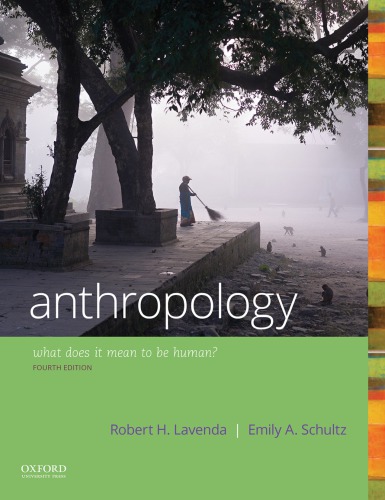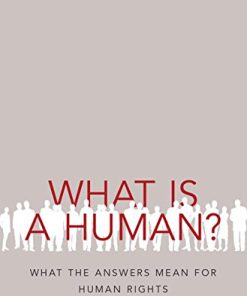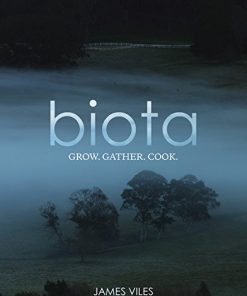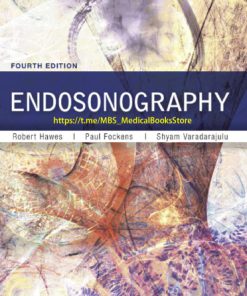Anthropology What Does It Mean to Be Human 4th Edition by Robert Lavenda, Emily Schultz 0190840684 9780190840686
$50.00 Original price was: $50.00.$25.00Current price is: $25.00.
Anthropology What Does It Mean to Be Human? 4th Edition by Robert H. Lavenda, Emily A. Schultz – Ebook PDF Instant Download/DeliveryISBN: 0190840684, 9780190840686
Full download Anthropology What Does It Mean to Be Human? 4th Edition after payment.

Product details:
ISBN-10 : 0190840684
ISBN-13 : 9780190840686
Author: Robert H. Lavenda, Emily A. Schultz
A unique alternative to more traditional, encyclopedic introductory texts, Anthropology: What Does It Mean to Be Human?, Fifth Edition, takes a question-oriented approach that incorporates cutting-edge theory and new ways of looking at important contemporary issues such as power, human rights, and inequality. With a total of sixteen chapters, this engaging, full-color text is an ideal one-semester overview that delves deep into anthropology without overwhelming students.
Anthropology What Does It Mean to Be Human? 4th Table of contents:
1 What is anthropology?
What Is Anthropology?
What Is the Concept of Culture?
What Makes Anthropology a Cross-Disciplinary Discipline?
Biological Anthropology
Cultural Anthropology
Linguistic Anthropology
Archaeology
Applied Anthropology
Medical Anthropology
Development Anthropology
The Promise of Anthropology
Chapter Summary
For Review
Key Terms
Suggested Readings
Module 1: Anthropology, Science, and Storytelling
Scientific and Nonscientific Explanations
Some Key Scientific Concepts
Assumptions
Evidence
Hypotheses
Testability
Theories
Objectivity
Module Summary
For Review
Key Terms
List of Key Terms
2 Why is evolution important to anthropologists?
What Is Evolutionary Theory?
What Material Evidence Is There for Evolution?
Pre-Darwinian Views of the Natural World
Essentialism
The Great Chain of Being
Catastrophism and Uniformitarianism
Transformational Evolution
What Is Natural Selection?
Population Thinking
Natural Selection in Action
How Did Biologists Learn about Genes?
Mendel’s Experiments
The Emergence of Genetics
What Are the Basics of Contemporary Genetics?
Genes and Traits
Mutation
DNA and the Genome
Genotype, Phenotype, and the Norm of Reaction
Niche Construction
What Does Evolution Mean?
Chapter Summary
For Review
Key Terms
Suggested Readings
List of Key Terms
3 What can the study of primates tell us about human beings?
What Are Primates?
How Do Biologists Classify Primates?
How Many Categories of Living Primates Are There?
Strepsirrhines
Haplorhines
Tarsiers
Anthropoids
What Is Ethnoprimatology?
Are There Patterns in Primate Evolution?
How Do Paleoanthropologists Reconstruct Primate Evolutionary History?
Primates of the Paleocene
Primates of the Eocene
Primates of the Oligocene
Primates of the Miocene
Chapter Summary
For Review
Key Terms
Suggested Readings
Module 2: Dating Methods in Paleoanthropology and Archaeology
Relative Dating Methods
Stratigraphic Superposition
Typological Sequences
Numerical (or Absolute) Dating Methods
Isotopic Methods
Potassium-Argon Dating
Fission-Track Dating
Uranium-Series Dating
Radiocarbon Dating
Thermoluminescence
Electron Spin Resonance (ESR)
Nonisotopic Methods
Dendrochronology
Amino Acid Racemization (AAR)
Paleomagnetism
The Molecular Clock
Modeling Prehistoric Climates
Module Summary
For Review
Key Terms
List of Key Terms
4 What can the fossil record tell us about human origins?
What Is Macroevolution?
What Is Hominin Evolution?
Who Were the First Hominins (6–3 mya)?
The Origin of Bipedalism
Changes in Hominin Dentition
Who Were the Later Australopiths (3–1.5 mya)?
How Many Species of Australopith Were There?
How Can Anthropologists Explain the Human Transition?
What Do We Know about Early Homo (2.4–1.5 mya)?
Expansion of the Australopith Brain
How Many Species of Early Homo Were There?
Earliest Evidence of Culture: Stone Tools
Who Was Homo erectus (1.8–1.7 mya to 0.5–0.4 mya)?
Morphological Traits of H. erectus
The Culture of H. erectus
H. erectus the Hunter?
What Happened to H. erectus ?
How Did Homo sapiens Evolve?
What Is the Fossil Evidence for the Transition to Modern H. sapiens ?
Where Did Modern H. sapiens Come from?
Who Were the Neandertals (130,000–35,000 Years Ago)?
What Do We Know about Middle Paleolithic/Middle Stone Age Culture?
Did Neandertals Hunt?
What Do We Know about Anatomically Modern Humans (200,000 Years Ago to Present)?
What Can Genetics Tell Us about Modern Human Origins?
What Do We Know about the Upper Paleolithic/Late Stone Age (40,000?–12,000 Years Ago)?
What Happened to the Neandertals?
How Many Kinds of Upper Paleolithic/Late Stone Age Cultures Were There?
Where Did Modern H. sapiens Migrate in Late Pleistocene Times?
Eastern Asia and Siberia
The Americas
Australasia
Two Million Years of Human Evolution
Chapter Summary
For Review
Key Terms
Suggested Readings
List of Key Terms
5 How does the evolutionary study of human variation undermine notions of biological race?
What Is Microevolution?
What Is a Species?
The Four Evolutionary Processes
Microevolution and Patterns of Human Variation
Gene Flow
Genetic Drift
Mutation and Natural Selection
Adaptation and Human Variation
Skin Color
Intelligence
The Molecularization of Race?
Phenotype, Environment, and Culture
Can We Predict the Future of Human Evolution?
Chapter Summary
For Review
Key Terms
Suggested Readings
List of Key Terms
6 How do we know about the human past?
What Is Archaeology?
Surveys
Archaeological Excavation
Archaeology and Digital Heritage
How Do Archaeologists Interpret the Past?
What Are Subsistence Strategies?
What Are Bands, Tribes, Chiefdoms, and States?
Are the Categories of Band, Tribe, Chiefdom, and State Still of Value to Anthropologists?
Whose Past Is It?
How Is the Past Being Plundered?
What Are the Critical Issues in Contemporary Archaeology?
Archaeology and Gender
Collaborative Approaches to Studying the Past
Cosmopolitan Archaeologies
Chapter Summary
For Review
Key Terms
Suggested Readings
List of Key Terms
7 Why did humans settle down, build cities, and establish states?
How Is the Human Imagination Entangled with the Material World?
Is Plant Cultivation a Form of Niche Construction?
How Do Anthropologists Explain the Origins of Animal Domestication?
Was There Only One Motor of Domestication?
How Did Domestication, Cultivation, and Sedentism Begin in Southwest Asia?
Natufian Social Organization
Natufian Subsistence
Domestication Elsewhere in the World
What Were the Consequences of Domestication and Sedentism?
How Do Anthropologists Define Social Complexity?
Why Is It Incorrect to Describe Foraging Societies as “Simple”?
What Is the Archaeological Evidence for Social Complexity?
Why Did Stratification Begin?
How Can Anthropologists Explain the Rise of Complex Societies?
Andean Civilization
Chapter Summary
For Review
Key Terms
Suggested Readings
List of Key Terms
8 Why is the concept of culture important?
How Do Anthropologists Define Culture?
Culture, History, and Human Agency
Why Do Cultural Differences Matter?
What Is Ethnocentrism?
Is It Possible to Avoid Ethnocentric Bias?
What Is Cultural Relativism?
How Can Cultural Relativity Improve Our Understanding of Controversial Cultural Practices?
Genital Cutting, Gender, and Human Rights
Genital Cutting as a Valued Ritual
Culture and Moral Reasoning
Did Their Culture Make Them Do It?
Does Culture Explain Everything?
Cultural Change and Cultural Authenticity
The Promise of the Anthropological Perspective
Chapter Summary
For Review
Key Terms
Suggested Readings
Module 3: On Ethnographic Methods
A Meeting of Cultural Traditions
Classic Single-Sited Fieldwork
How Do Anthropologists Think about the Ethics of Their Work?
What Is Participant Observation?
Multisited Fieldwork
Collecting and Interpreting Data
The Dialectic of Fieldwork: Interpretation and Translation
Interpreting Actions and Ideas
The Dialectic of Fieldwork: An Example
The Effects of Fieldwork
The Production of Anthropological Knowledge
Anthropological Knowledge as Open-Ended
Module Summary
For Review
Key Terms
Suggested Readings
List of Key Terms
9 Why is understanding human language important?
What Makes Language Distinctively Human?
How Are Language and Culture Related?
How Do People Talk about Experience?
What Does It Mean to “Learn” a Language?
How Does Context Affect Language?
How Does Language Affect How We See the World?
Pragmatics: How Do We Study Language in Contexts of Use?
Ethnopragmatics
What Happens When Languages Come into Contact?
What Is the Difference between a Pidgin and a Creole?
How Is Meaning Negotiated?
What Does Linguistic Inequality Look Like?
What Is Language Ideology?
How Have Language Ideologies Been at Work in Studies of African American Speech?
What Is Raciolinguistics?
What Is Lost If a Language Dies?
How Are Language and Truth Connected?
Chapter Summary
For Review
Key Terms
Suggested Readings
Module 4: Components of Language
Phonology: Sounds
Morphology: Word Structure
Syntax: Sentence Structure
Semantics: Meaning
For Review
Key Terms
List of Key Terms
10 How do we make meaning?
What Is Play?
How Does Play Encourage Reflexivity?
What Are Some Effects of Play?
What Is Art?
Is There a Definition of Art?
“But Is It Art?”
“She’s Fake”: Art and Authenticity
How Does Hip-Hop Become Japanese?
What Is Myth?
How Does Myth Reflect—and Shape—Society?
Do Myths Help Us Think?
What Is Ritual?
How Can Ritual Be Defined?
How Is Ritual Expressed in Action?
What Are Rites of Passage?
How Are Play and Ritual Complementary?
How Are Symbolic Practices and Society Related?
What Are Symbols?
What Is Religion?
How Do Anthropologists Understand the Relations between Religion and Secularism?
What is the Anthropology of Ontology?
How Do People Communicate in Religion?
Two Case Studies
Coping with Misfortune: Witchcraft, Oracles, and Magic among the Azande
Azande Witchcraft Beliefs
Dealing with Witches
Are There Patterns of Witchcraft Accusation?
Coping with Misfortune: Listening for God among Contemporary Evangelicals in the United States
How Do People Cope with Change?
How Are Symbolic Practices Used as Instruments of Power?
Chapter Summary
For Review
Key Terms
Suggested Readings
List of Key Terms
11 Why do anthropologists study economic relations?
How Do Anthropologists Study Economic Relations?
What Are the Connections between Culture and Livelihood?
Self-Interest, Institutions, and Morals
How Do Anthropologists Study Production, Distribution, and Consumption?
How Are Goods Distributed and Exchanged?
Capitalism and Neoclassical Economics
What Are Modes of Exchange?
The Maisin and Reciprocity
Does Production Drive Economic Activities?
Labor
Modes of Production
What Is the Role of Conflict in Material Life?
Why Do People Consume What They Do?
The Internal Explanation: Malinowski and Basic Human Needs
The External Explanation: Cultural Ecology
How Is Consumption Culturally Patterned?
What Is the Original Affluent Society?
Banana Leaves in the Trobriand Islands
How Is Consumption Being Studied Today?
Coca-Cola in Trinidad
The Anthropology of Food and Nutrition
Chapter Summary
For Review
Key Terms
Suggested Readings
List of Key Terms
12 How do anthropologists study political relations?
How Are Culture and Politics Related?
How Do Anthropologists Study Politics?
Is Political Power Nothing More Than Coercion?
How Do Anthropologists Study Resistance to Coercion?
Are There Limitations to Analyzing Power in Terms of Domination and Resistance?
What Are Domination and Hegemony?
What Are Biopower and Governmentality?
How Do Anthropologists Study Politics of the Nation-State?
Nation Building in a Postcolonial World: The Example of Fiji
How Does Globalization Affect the Nation-State?
Migration, Trans-Border Identities, and Long-Distance Nationalism
Anthropology and Multicultural Politics in the New Europe
What Happens to Citizenship in a Globalized World?
How Can Citizenship Be Flexible?
What Is Territorial Citizenship?
What Is Vernacular Statecraft?
Global Politics in the Twenty-First Century
Chapter Summary
For Review
Key Terms
Suggested Readings
List of Key Terms
13 What can anthropology teach us about sex, gender, and sexuality?
How Did Twentieth-Century Feminism Shape the Anthropological Study of Sex, Gender, and Sexuality?
How Do Anthropologists Organize the Study of Sex, Gender, and Sexuality?
How Are Sex and Gender Affected by Other Forms of Identity?
How Do Ethnographers Study Gender Performativity?
How Do Anthropologists Study Connections among Sex, Gender, Sexuality, and the Body?
How Do Anthropologists Study Connections between Bodies and Technologies?
How Do Anthropologists Study Relations between Sex, Gender, and Sexuality?
How Does Ethnography Document Variable Culture Understandings Concerning Sex, Gender, and Sexuality?
Female Sexual Practices in Mombasa
Male and Female Sexual Practices in Nicaragua
Transsexuality and Same-Sex Desire in Iran
Chapter Summary
For Review
Key Terms
Suggested Readings
List of Key Terms
14 Where do our relatives come from and why do they matter?
How Do Human Beings Organize Interdependence?
What Is Friendship?
What Is Kinship?
What Is the Role of Descent in Kinship?
Bilateral Kindreds
What Role Do Lineages Play in Descent?
Lineage Membership
The Logic of Lineage Relationships
What Are Patrilineages?
What Are Matrilineages?
What Are Kinship Terminologies?
What Criteria Are Used for Making Kinship Distinctions?
What Is Adoption?
Adoption in Highland Ecuador
What Is the Relation between Adoption and Child Circulation in the Andes?
How Flexible Can Relatedness Be?
Negotiation of Kin Ties among the Ju/’hoansi
Euro-American Kinship and New Reproductive Technologies
Assisted Reproduction in Israel
Compadrazgo in Latin America
Organ Transplantation and the Creation of New Relatives
What Is Marriage?
Toward a Definition of Marriage
Woman Marriage and Ghost Marriage among the Nuer
Why Is Marriage a Social Process?
Patterns of Residence after Marriage
Single and Plural Spouses
Monogamy
Polygyny
Polyandry
The Distinction between Sexuality and Reproductive Capacity
What Is the Connection between Marriage and Economic Exchange?
What Is a Family?
What Is the Nuclear Family?
What Is the Polygynous Family?
Competition in the Polygynous Family
Extended and Joint Families
How Are Families Transformed over Time?
Divorce and Remarriage
Divorce in Guider
Grounds for Divorce
Separation among Inuit
Blended Families
How Does International Migration Affect the Family?
Families by Choice
The Flexibility of Marriage
Love, Marriage, and HIV/AIDS in Nigeria
Chapter Summary
For Review
Key Terms
Suggested Readings
List of Key Terms
15 What can anthropology tell us about social inequality?
What Are Naturalizing Discourses?
Class
Class and Gender in Indonesia
Class and Caste in the United States?
Caste
Caste in India
How Do Caste and Class Intersect in Contemporary India?
Race
Colorism in Nicaragua
Ethnicity
How Do Anthropologists Study Human Rights?
Are Human Rights Universal?
Human-Rights Discourse as the Global Language of Social Justice
Rights versus Culture?
Rights to Culture?
Are Rights Part of Culture?
How Can Culture Help in Thinking about Rights?
Human Rights in Hawaii: Violence against Women
What Is the Relationship between Human Rights and Humanitarianism?
Chapter Summary
For Review
Key Terms
Suggested Readings
List of Key Terms
16 What is applied anthropology?
What Is Medical Anthropology?
What Makes Medical Anthropology “Biocultural”?
How Do People with Different Cultures Understand the Causes of Sickness and Health?
Kinds of Selves
Self and Subjectivity
Subjectivity, Trauma, and Structural Violence
How Are Human Sickness and Health Shaped by the Global Capitalist Economy?
Health, Human Reproduction, and Global Capitalism
Medical Anthropology and HIV/AIDS
The Future of Medical Anthropology
What Is Development Anthropology?
Is Development Anthropology Possible?
Is good development possible? Can anthropologists make it better?
Is development bad? Should anthropologists stay away from it?
Should anthropologists regard development projects as targets of anthropological and historical analysis?
What Is the Future of Applied Anthropology?
People also search for Anthropology What Does It Mean to Be Human? 4th:
avanti anthropology what does it mean to be human
anthropology what does it mean to be human pdf
anthropology what does it mean to be human 4th edition
anthropology what does it mean to be human pdf free
borrow anthropology what does it mean to be human
Tags: Anthropology, Human, Robert Lavenda, Emily Schultz
You may also like…
Politics & Philosophy - Government & Politics
What is a human? : what the answers mean for human rights 1st Edition Evans
Religion & Spirituality - Christianity
Politics & Philosophy - Government & Politics
What Does It Mean to Be White Developing White Racial Literacy Robin J Diangelo
Cookbooks
Medicine
Economics for healthcare managers 4th Edition by Robert H Lee ISBN 1640550488 978-1640550483
Biology and other natural sciences
Super You How Technology Is Revolutionizing What It Means to Be Human Andy Walker
Medicine












